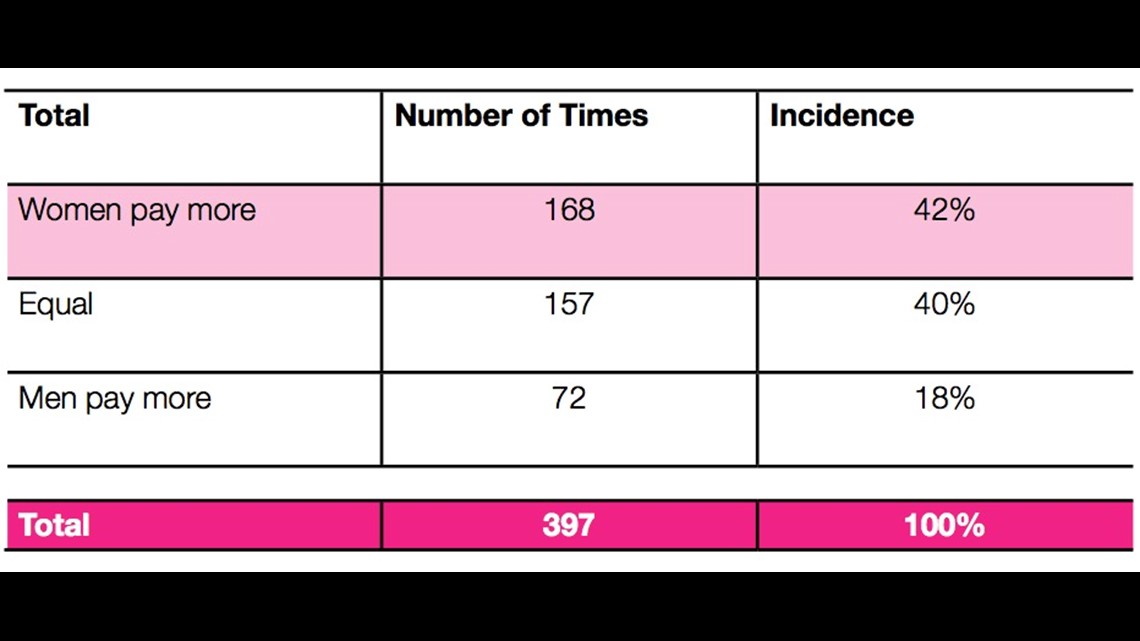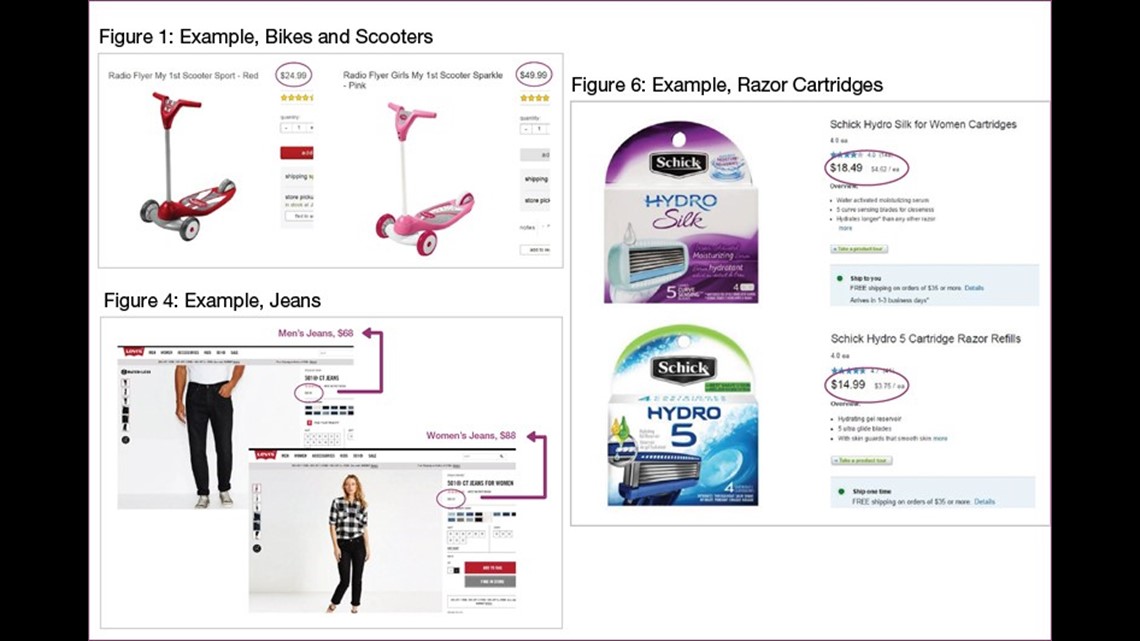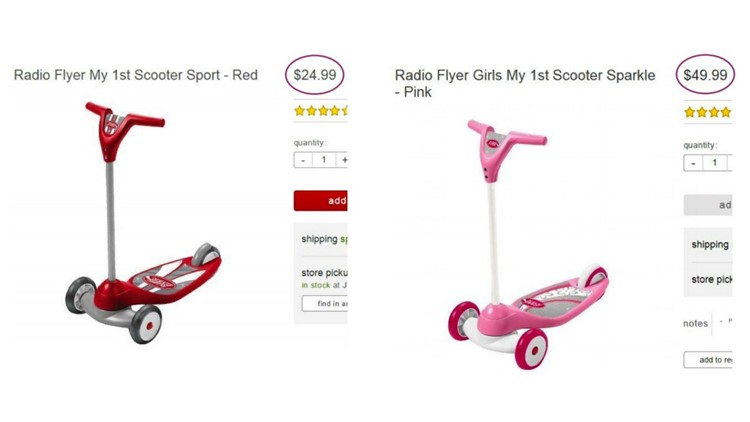A study conducted by the New York City Department of Consumer Affairs on gender-based pricing suggests women pay significantly more money than men for the same products.
The agency compared 800 products with male and female versions representing more than 90 brands sold at two dozen retailers in New York City. The industries studied include: toys and accessories, children’s clothing, adult clothing, personal care products, and home health care products for seniors.
The study, titled “From Cradle to Cane: The Cost of Being a Female Consumer,” concluded women’s products cost on average 7 percent more than similar products for men. The highest difference (13 percent) was in the personal care products industry, while the lowest difference (4 percent) was in the children’s clothing industry. Specifically:
- 7 percent more for toys and accessories
- 4 percent more for children’s clothing
- 8 percent more for adult clothing
- 13 percent more for personal care products
- 8 percent more for senior/home health care products


A disparity frequency chart shows women pay more 42 percent of the time, while men pay more only 18 percent of the time. Forty-percent of the time the pricing is equal.
The study included 35 product categories, and female consumers paid more in 30 of those categories.
For example, Target sells a red Radio Flyer scooter and a pink Radio Flyer scooter on Target.com. The two products are identical with the exception of the color. When the report was published, Target was selling the red scooter for $24.99 and the pink scooter for $49.99.
A Target spokesman told the Washington Post the company lowered the price of the pink scooter after the report was released, citing a “system error.”


Another example includes nearly identical razor blades sold by Schick.
Men pay $14.99 while women pay $18.49
The study’s official conclusion stated:
“Across her lifetime, a female consumer faces different degrees of markups. Babies’ and children’s products had the least pricing discrepancies, adult personal care products the most, and adult clothing and senior products were in the middle, at roughly equivalent pricing discrepancies by percent. This is notable, given the “adult” stage of a consumer’s life is longer than any other lifecycle stage. Additionally, the frequency at which adults consume personal care products is higher than any other category of the consumer goods analyzed in this study.
In the aggregate, over the course of a female consumer’s lifetime, these discrepancies would have a much larger financial impact, given that, on average, personal care products cost 13 percent more for women than men. DCA found, on average, that women pay approximately 7 percent more than men for similar products. Products’ price differences based on gender are largely inescapable for female consumers simply due to the product offerings available in the market.”
There are some examples where women pay less than men. Men pay an estimated $15,000 more over their lifetime than women for car insurance, according to CoverHound.com. According to a study from Swapalease.com, men also pay more than women on popular car leases.



